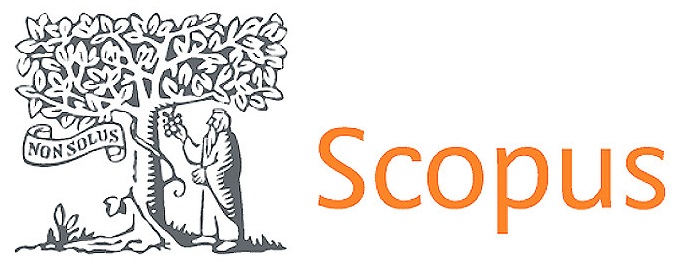Digital divides and youth cultural participation in rural contexts in Ecuador
DOI:
https://doi.org/10.56294/saludcyt20251913Keywords:
digital divide, digital cultural capital, symbolic exclusion, Ecuadorian youthAbstract
This article examined digital gaps and their impact on the cultural exclusion of Ecuadorian youth aged 20 to 24 in Zone 5, composed of the provinces of Guayas, Los Ríos, Bolívar, Santa Elena, and Galápagos. Using a quasi-experimental design and a quantitative approach, data were collected and compared between two groups differentiated by their level of connectivity and pedagogical mediation. The sample consisted of 400 young people, equally distributed between both groups. A structured questionnaire was applied to assess dimensions such as digital cultural capital, participation in online cultural practices, use of platforms, and barriers to cultural digital appropriation. The results showed that the group with stable connectivity and training in digital skills presented higher levels of technological self-efficacy, participation in digital cultural communities, and production of symbolic content. In contrast, the other group exhibited limitations in both access (unstable mobile connections and basic devices) and the ability to leverage cultural opportunities in the digital environment. Statistical tests revealed significant differences between the groups in all measured dimensions (p < 0.01), with moderate to high effect sizes. It was concluded that digital exclusion among youth is not only technical but also symbolic, cultural, and educational. Furthermore, it was proposed that public policies should incorporate critical training, territorial support, and cultural inclusion, moving beyond a merely infrastructural paradigm.
References
1. Castells M. La era de la información. Madrid: Alianza Editorial; 2003. Disponible en: https://www.alianzaeditorial.es/libro.php?id=000000000000000000000000
2. Buckingham D. Youth, identity, and digital media. Cambridge: MIT Press; 2008. Disponible en: https://mitpress.mit.edu/9780262524826/youth-identity-and-digital-media/
3. Livingstone S, Helsper E. Gradations in digital inclusion: children, young people and the digital divide. New Media Soc. 2007;9(4):671–696. Disponible en: https://doi.org/10.1177/1461444807080335
4. Warschauer M. Technology and social inclusion. Cambridge, MA: MIT Press; 2004. Disponible en: https://mitpress.mit.edu/9780262731736/technology-and-social-inclusion/
5. Martínez Tessore AL. Brechas digitales y derecho a la educación en tiempos de pandemia. Propuesta Educ. 2021;(56):11–27. Disponible en: http://www.propuestaeducativa.flacso.org.ar/index.php/PropuestaEducativa/article/view/2300
6. Guapulema Ocampo KJ, Alvarado Guapulema PA, Proaño del Castillo MG, Peñaloza Camacho KI. La brecha digital en la educación ecuatoriana. LATAM Rev Latinoam Cienc Soc. 2024;5(5):4038–4050. Disponible en: https://www.revlatam.com/index.php/revista/article/view/4038
7. Van Dijk J. The deepening divide: inequality in the information society. London: Sage; 2005. Disponible en: https://us.sagepub.com/en-us/nam/the-deepening-divide/book223771
8. Comisión Económica para América Latina y el Caribe (CEPAL). Tecnologías digitales para un nuevo futuro en América Latina y el Caribe. Santiago: CEPAL; 2020. Disponible en: https://www.cepal.org/es/publicaciones/45539
9. UNESCO. Alfabetización mediática e informacional para todos. París: UNESCO; 2021. Disponible en: https://unesdoc.unesco.org/ark:/48223/pf0000374626
10. Selwyn N. Education and technology: key issues and debates. London: Routledge; 2011. Disponible en: https://doi.org/10.4324/9780203127829
11. Lazo LM. La constitución del capital cultural digital en la educación contemporánea. Lat Am J Hum Educ Diverg. 2022;1(1):7–17. Disponible en: https://www.revistaslatam.org/index.php/LAJHED/article/view/114
12. DiMaggio P, Hargittai E. From the ‘digital divide’ to ‘digital inequality’: studying Internet use as penetration increases. Princeton University; 2001. Disponible en: https://www.princeton.edu/~artspol/workpap15.html
13. Jenkins H, Ford S, Green J. Spreadable media: creating value and meaning in a networked culture. New York: NYU Press; 2013. Disponible en: https://nyupress.org/9781479859524/spreadable-media/
14. Díaz R, Salas M. Participación cultural y brecha digital entre adolescentes rurales peruanos. Rev Latinoam Cienc Soc Niñez Juvent. 2022;20(1):89–104. Disponible en: https://revistas.umanizales.edu.co/ojs/index.php/rlcsnj/article/view/5732
15. Helsper EJ, Van Deursen AJ. Digital skills in Europe: impact on youth opportunities. New Media Soc. 2017;19(2):240–259. Disponible en: https://doi.org/10.1177/1461444815616354
16. Cabero-Almenara J, Torres-Barzabal L, Hermosilla-Rodríguez JM. TIC y ciudadanía crítica e-digital. Educ Knowl Soc. 2019;20:1–14. Disponible en: https://doi.org/10.14201/eks.20369
17. boyd d. It’s complicated: the social lives of networked teens. New Haven: Yale University Press; 2014. Disponible en: https://yalebooks.yale.edu/book/9780300199000/its-complicated/
18. Rendón JG, Angulo JP. Metaanálisis sobre ciudadanía digital en Iberoamérica. Edutec. 2022;(82):91–103. Disponible en: https://doi.org/10.21556/edutec.2022.82.1997
19. Ruiz JM, Pérez C. Integración tecnológica y mediación pedagógica en aulas virtuales. Rev Educ Costa Rica. 2021;45(2):1–20. Disponible en: https://www.revistas.ucr.ac.cr/index.php/educacion/article/view/45738
20. Vygotsky LS. Mind in society: the development of higher psychological processes. Cambridge, MA: Harvard University Press; 1978. Disponible en: https://doi.org/10.4159/harvard.9780674076680
21. Wang D, Hong Y, Tai Y. Online youth culture and gratification. Telemat Inform. 2021;58:101523. Disponible en: https://doi.org/10.1016/j.tele.2020.101523
22. Martín-Barbero J. Communication, culture and hegemony. Mexico: GGM; 2001. Disponible en: https://doi.org/10.2307/j.ctv2v6p5gq.6
23. Cobo C. Invisible learning: toward a new ecology of education. Barcelona: UOC; 2010. Disponible en: http://www.invisiblelearning.com/book/
24. Albornoz LA. Comunicación y políticas públicas en la sociedad digital. Montevideo: UNESCO; 2004. Disponible en: https://unesdoc.unesco.org/ark:/48223/pf0000135367
25. Feixa C. Generación XX: la juventud entre la tradición y la modernidad. Rev Latinoam Cienc Soc Niñez Juvent. 2006;4(2):1–18. Disponible en: https://revistas.umanizales.edu.co/ojs/index.php/rlcsnj/article/view/459
26. Goedert D, Arndt P. Educación remota en pandemia: reflexiones pedagógicas. Rev Educ Distancia. 2020;20(63):1–17. Disponible en: https://doi.org/10.6018/red.444401
27. Sádaba-Chalezquer C. Participación cultural juvenil y entornos digitales. Profesional Inform. 2022;31(4):e310402. Disponible en: https://doi.org/10.3145/epi.2022.jul.02
28. We Are Social, Meltwater. Digital 2023: global overview report. London: We Are Social; 2023. Disponible en: https://wearesocial.com/digital-2023-global-overview-report/
29. Livingstone S, Third A. Children’s and young people’s rights in the digital age. New Media Soc. 2017;19(5):657–670. Disponible en: https://doi.org/10.1177/1461444816686318
30. De Gouveia P, Briceño S. Políticas de inclusión digital y juventud. Lima: Fundación Telefónica; 2019. Disponible en: https://www.fundaciontelefonica.com/publicacion/politicas-de-inclusion-digital-y-juventud/
31. Norris P. Digital divide: civic engagement, information poverty, and the internet worldwide. Cambridge: Cambridge University Press; 2001. Disponible en: https://doi.org/10.1017/CBO9780511805087
32. Martín-Barbero J. De los medios a las mediaciones. Mexico: GGM; 1987. Disponible en: https://doi.org/10.4324/9781315548978.
Published
Issue
Section
License
Copyright (c) 2025 Felipe Arévalo-Cordovilla, Kerly Palacios-Zamora, Luis Rosero C, Guillermo Del Campo S (Author)

This work is licensed under a Creative Commons Attribution 4.0 International License.
The article is distributed under the Creative Commons Attribution 4.0 License. Unless otherwise stated, associated published material is distributed under the same licence.



